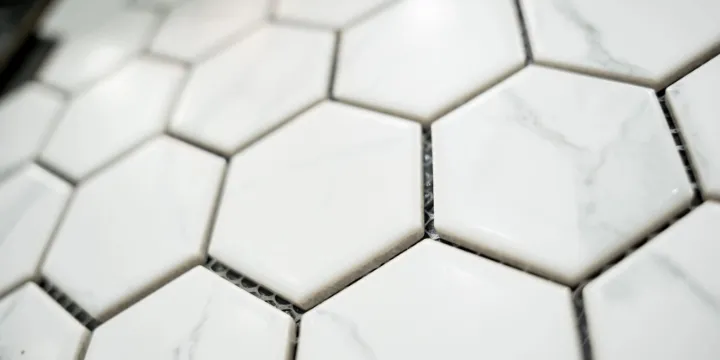How to Select the Perfect Mosaic Tile for Your Kitchen Backsplash
The kitchen backsplash protects your walls from splashes and heat—yet it also sets the tone for your entire space. With so many mosaic options, choosing the right tile can feel overwhelming. This guide will help you pick a backsplash that’s beautiful, practical, and perfectly matched to your kitchen.

1) Define Your Kitchen Style
Start with your overall aesthetic. Modern kitchens pair well with clean geometry like hexagon (honeycomb), while classic or transitional spaces shine with curvy, decorative silhouettes such as Arabesque (lantern). Rustic or farmhouse styles love the soft character of honed or tumbled natural stone.
2) Choose the Right Material
- Marble — timeless luxury; ideal for bright, elegant kitchens.
- Travertine — warm and earthy; perfect for rustic or Mediterranean vibes.
- Limestone — subtle, matte beauty for calm, neutral palettes.
- Glass mosaics — reflect light and add color, great for smaller kitchens.
For cooktop walls, prioritize heat resistance and finish. Natural stone in backsplashes usually benefits from professional sealing to resist stains and splashes.

3) Pick Pattern & Scale
Pattern defines character. Hexagon (honeycomb) reads sleek and architectural; Arabesque (lantern) feels ornate and timeless. For playful texture, try penny rounds; for heritage charm, consider basket weave or subway brick. Scale matters too: smaller mosaics suit compact spaces and tight corners, while larger shapes make a bold statement above longer runs of countertop.
Pro tip: keep busy patterns on the backsplash and let countertops and cabinets stay calmer—this balance protects visual hierarchy and avoids clutter.
4) Color, Finish & Grout
- Color: Match or contrast cabinets/counters. Dark cabinets pop with crisp white marble; light cabinetry pairs beautifully with soft gray or beige stone.
- Finish: Polished is reflective and contemporary; honed feels soft and upscale; tumbled delivers a rustic, hand-crafted vibe.
- Grout: Darker grout outlines shapes (great for hexagon and arabesque); lighter grout blends seams for a seamless field.
5) Layout, Sheet Size & Edges
Mesh-mounted sheets speed up installation and help keep spacing consistent. Ask for sheet dimensions and coverage per sheet to estimate quantities accurately. Around edges and outlets, plan clean terminations: matching trim pieces, a neat caulk line, or a framed edge with pencil liners.
6) Practicality & Maintenance
- Seal natural stone before grouting and again after, especially behind stoves and sinks.
- Use pH-neutral cleaners to preserve finish and reduce etching.
- Check weight & substrate if installing over drywall vs. cement board in high-moisture zones.
7) Always Order Samples
Lighting changes everything. Order swatches to evaluate color, veining, and finish in your own kitchen. Compare a white hexagon sample with an arabesque sample side by side; you’ll instantly see which aligns with your style.
8) Common Mistakes to Avoid
- Overmixing patterns: Let your backsplash lead; keep other surfaces quieter.
- Ignoring grout: Color and joint width dramatically change the final look.
- Skipping sealing: Especially with marble, sealing helps resist stains.
- Ordering too tight: Add 10% overage for cuts and future repairs.
9) Design Ideas & Pairings
- Modern Minimal: White cabinets + light quartz + white hexagon with mid-gray grout.
- Classic Luxe: Shaker doors + marble counters + arabesque lantern in honed marble.
- Warm Rustic: Wood tones + butcher block + tumbled travertine mosaics (beige/cream palette).
Want more options? Browse all styles on our Shop by Pattern hub.
10) FAQ
Are mosaic tiles good for kitchen backsplashes?
Yes. Mesh-mounted mosaics are easy to install on backsplashes and provide excellent splash protection with standout style.
Which is better for a modern kitchen: hexagon or arabesque?
Hexagon reads crisp and contemporary; arabesque feels classic and decorative. Both work beautifully—choose based on your cabinet style and desired mood.
Do marble mosaic backsplashes need sealing?
We recommend sealing before and after grouting, then re-sealing periodically based on use and cleaner type.

